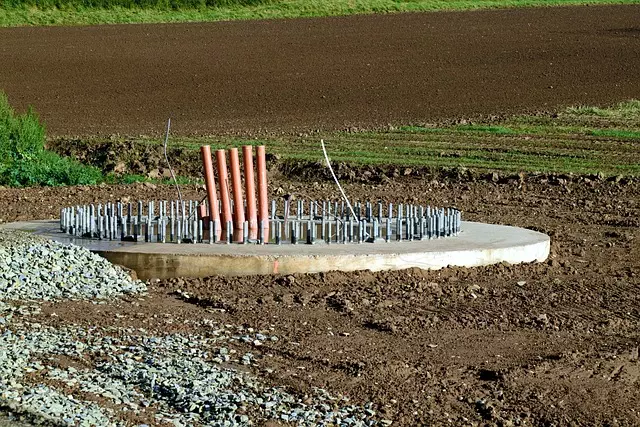Foundation repair protection plans offer homeowners peace of mind by providing comprehensive coverage for structural issues through regular foundation inspections using advanced technologies. These plans include annual or bi-annual check-ups, emergency repair services, and tailored solutions to extend the lifespan of the home's foundation. Investing in such a plan safeguards your investment, prevents costly repairs, and provides proactive maintenance, ensuring a well-maintained, structurally sound home for reselling. Key components include licensed professional inspections, comprehensive coverage of specific issues, and preventive measures like re-leveling and underpinning. Choosing the ideal service provider involves comparing quotes from reputable companies with positive customer reviews, while regular maintenance through foundation inspections after installation ensures optimal protection.
“Protecting your home’s foundation is an investment in its longevity. Foundation Repair Protection Plans (FRPPs) offer comprehensive coverage for unexpected issues, providing peace of mind. This article guides you through the intricacies of FRPPs, starting with understanding their purpose and the vital role a thorough foundation inspection plays in plan development. We’ll explore the numerous benefits, key components to consider, and tips for choosing the best service provider. Learn how to maintain and claim your protection, and discover the truth behind common misconceptions about these valuable plans.”
Understanding Foundation Repair Protection Plans

Foundation repair protection plans are designed to safeguard homeowners from unexpected structural issues, offering peace of mind and financial security. These comprehensive plans typically cover various aspects of foundation maintenance, including regular inspections, repairs, and prevention measures. The primary goal is to identify potential problems early on through thorough Foundation Inspections, which can range from non-invasive visual assessments to advanced technology scans. By catching issues like cracks, settling, or moisture intrusion in their initial stages, homeowners can prevent minor problems from escalating into costly repairs.
These protection plans often include annual or bi-annual check-ups, where professionals assess the foundation’s health and provide recommendations for any necessary work. Regular maintenance can extend the lifespan of a home’s foundation, ensuring stability and structural integrity. Additionally, many plans offer emergency repair services, guaranteeing prompt attention to sudden foundation failures, thus minimizing potential damage and costs.
The Role of Foundation Inspection in Plan Development

A comprehensive Foundation Repair Protection Plan starts with a meticulous foundation inspection. This crucial step involves professional evaluators who meticulously scrutinize every aspect of your home’s basement or crawlspace, from the structural integrity of the walls and floors to signs of water damage, settlement cracks, and mold growth. The insights gained from this detailed inspection inform the design of the protection plan, ensuring that potential issues are addressed proactively.
By identifying existing problems and predicting future risks, a thorough foundation inspection enables tailored solutions that offer long-lasting protection. This proactive approach not only safeguards your investment but also prevents costly repairs down the line, providing peace of mind for homeowners.
Benefits of Investing in a Protection Plan

Investing in a foundation repair protection plan offers numerous advantages for homeowners. One of the key benefits is peace of mind. Regular foundation inspections included in such plans can help identify potential issues early on, preventing small problems from escalating into costly repairs. By addressing foundation concerns promptly, you may save significant amounts of money and avoid extensive, disruptive, and expensive renovation work.
Additionally, these protection plans provide a comprehensive approach to maintaining your home’s structural integrity. They often cover various services, such as releveling, piercing, and supporting foundations, ensuring that your house remains stable and secure. This proactive strategy not only extends the lifespan of your foundation but also protects your investment, as it can make reselling your property easier by showcasing a well-maintained and structurally sound home.
Key Components to Look for in a Foundation Repair Plan

When considering a foundation repair protection plan, there are several key components to look for to ensure comprehensive coverage and peace of mind. Firstly, a robust plan should include regular foundation inspections conducted by licensed professionals. These inspections allow for early detection of any potential issues, ensuring that minor problems don’t escalate into costly repairs. Look for plans that offer annual or bi-annual check-ups as standard practice.
Additionally, the protection plan should clearly outline the types of foundation problems covered, such as settlement cracks, uneven floors, and bowing walls. It’s important to understand what is considered a maintenance item versus a covered repair. Comprehensive plans often include preventive measures like re-leveling, underpinning, and piering, providing a more holistic approach to safeguarding your home’s foundation.
Choosing the Right Service Provider for Your Plan

When selecting a foundation repair protection plan, choosing the right service provider is paramount. It’s crucial to look for companies that offer comprehensive services, including regular foundation inspections, to identify potential issues early on. A reputable provider should have certified experts who can assess your home’s structural integrity and provide tailored solutions.
Ensure they have a proven track record, positive customer reviews, and the necessary licenses and insurance. Compare quotes from multiple providers to find the best value for money without compromising quality. Remember, the right service provider will prioritize your safety and peace of mind, offering ongoing support and protection for your home’s foundation.
Maintaining and Claiming Your Foundation Repair Protection

Regular maintenance is key to ensuring your foundation repair protection plan remains effective. After initial installation, a comprehensive foundation inspection should be conducted to identify any potential issues or vulnerabilities. This proactive step allows for timely repairs and prevents minor problems from escalating into costly damages. It involves examining the structural integrity of the foundation, checking for signs of settlement, cracks, or water damage.
When claiming under your protection plan, it’s crucial to follow the specified procedures outlined by the provider. Typically, this includes documenting the issue with detailed photos, contacting the insurance company promptly, and allowing access for further foundation inspection and evaluation. Timely communication and adherence to these steps will ensure a smoother claims process, leading to faster repairs and reduced disruption to your property.
Common Misconceptions About Foundation Repair Plans Debunked

Many homeowners often have misconceptions about foundation repair protection plans, assuming they are only necessary for severe structural issues. However, a comprehensive plan can offer valuable peace of mind, especially when it comes to early detection and prevention. Regular foundation inspections are a key component, allowing professionals to identify potential problems before they become costly repairs. Unlike popular belief, these plans aren’t just for old homes; they provide essential coverage for any property, ensuring stability and safety over time.
Another misconception is that such plans are one-size-fits-all. In reality, many providers offer customized options tailored to specific needs. Whether you live in an area prone to certain environmental factors or have unique structural concerns, a qualified provider can design a plan to address these issues. Debunking these myths can empower homeowners to make informed decisions regarding their home’s long-term health and financial security.
